
They were scrambling to excavate ahead of the construction of the Aswan High
Dam, which would submerge dozens of archaeological sites, including a 13,400-year-old cemetery called Jebel Sahaba, by the decade’s end. The cemetery, in what is now northern Sudan, was found to contain the skeletons of 61 men, women, and children. While excavating their remains, the late archaeologist Fred Wendorf of Southern Methodist University noticed unmistakable signs of violence—broken bones, smashed skulls, and stone projectiles embedded in the people’s bones or lying near their bodies. He concluded that they were victims of a battle or massacre. At the time, the idea of organized warfare in the distant past was revolutionary. “Prevailing archaeological doctrine in the peace-and-love era of the 1960s held that war and violence were modern inventions,” says Christopher Knüsel, a physical anthropologist at the University of Bordeaux. “There was a long period when archaeologists said warfare didn’t happen in prehistory.”
Bu hikaye Archaeology dergisinin January/February 2022 sayısından alınmıştır.
Start your 7-day Magzter GOLD free trial to access thousands of curated premium stories, and 9,000+ magazines and newspapers.
Already a subscriber ? Giriş Yap
Bu hikaye Archaeology dergisinin January/February 2022 sayısından alınmıştır.
Start your 7-day Magzter GOLD free trial to access thousands of curated premium stories, and 9,000+ magazines and newspapers.
Already a subscriber? Giriş Yap

ORIGINS OF PERUVIAN RELIGION
While investigating looters' holes at the site of La Otra Banda in northern Peru's Zaña Valley, archaeologist Luis A. Muro Ynoñán of the Field Museum and the Pontifical Catholic University of Peru spotted carved blocks around seven feet below the surface.

ISLAND OF FREEDOM
Many of the enslaved Africans sent to Brazil beginning in 1549 were from what is now Angola, where one of the most widely spoken languages was Kimbundu.
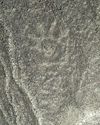
NAZCA GHOST GLYPHS
From the 1940s to the early 2000s, geoglyphs were discovered in the Nazca Desert of southern Peru depicting animals, humans, and other figures at the rate of 1.5 per year.

COLONIAL COMPANIONS
The ancestry of dogs in seventeenth-century Jamestown offers a window into social dynamics between Indigenous people and early colonists.
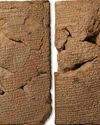
BAD MOON RISING
The British Museum houses around 130,000 clay tablets from ancient Mesopotamia written in cuneiform script between 3200 B.C. and the first century A.D.
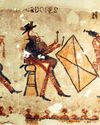
DANCING DAYS OF THE MAYA
In the mountains of Guatemala, murals depict elaborate performances combining Catholic and Indigenous traditions
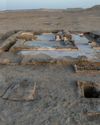
LOST GREEK TRAGEDIES REVIVED
How a scholar discovered passages from a great Athenian playwright on a discarded papyrus

Medieval England's Coveted Cargo
Archaeologists dive on a ship laden with marble bound for the kingdom's grandest cathedrals
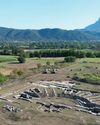
Unearthing a Forgotten Roman Town
A stretch of Italian farmland concealed one of the small cities that powered the empire
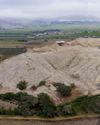
TOP 10 DISCOVERIES OF 2024
ARCHAEOLOGY magazine reveals the year's most exciting finds